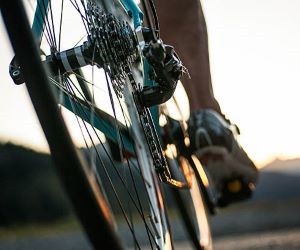Master endurance cycling in tropical climates with effective strategies. Learn hydration, heat adaptation, and training tips for peak performance.
WHAT IS THE BEST CYCLING CADENCE FOR BEGINNERS?
Cycling cadence—the number of pedal revolutions per minute—plays a critical role in efficiency, endurance, and comfort. For beginners, finding the “best” cadence is less about hitting a magic number and more about understanding body mechanics, terrain, and goals. While elite riders often spin between 85–100 RPM, new cyclists may find themselves pedaling closer to 60–75 RPM until fitness and technique develop. This article explores the science of cadence, the pros and cons of different ranges, and practical drills to help beginners discover their sweet spot. By mastering cadence early, cyclists build smoother strokes, conserve energy, and avoid common mistakes that slow progress.

What cadence means in cycling
Cadence measures how fast you are pedaling, expressed in revolutions per minute (RPM). It is one of the most overlooked yet vital elements of cycling technique. Beginners often pedal too slowly with heavy gears, leading to muscle fatigue, or too quickly with light gears, causing wasted energy. Finding balance is key.
Why cadence matters
Cadence directly impacts efficiency, muscle engagement, and cardiovascular demand. A higher cadence shifts effort to the aerobic system (lungs and heart), while a lower cadence puts more strain on muscles, especially quads and knees. Striking the right cadence helps beginners ride longer with less discomfort.
Cadence ranges for beginners
Research and coaching generally recommend 75–90 RPM as an effective cadence range for most new riders. This balance promotes smoother pedaling and reduces the risk of overloading muscles. However, the “best” cadence varies depending on body type, fitness, and riding terrain.
Low cadence: below 70 RPM, often harder on muscles
Moderate cadence: 75–90 RPM, ideal for beginners to build efficiency
High cadence: above 95 RPM, typically used by advanced riders
Understanding cadence empowers beginners to train smarter, avoiding habits that cause fatigue and inefficiency.
How beginners can find the right cadence
Determining your best cadence is not about copying pro cyclists but about experimenting to find what feels sustainable and efficient. Beginners can use simple tools and drills to identify their sweet spot.
Using cadence sensors and apps
Modern cycling computers and smartphone apps track RPM in real time, allowing riders to monitor cadence during rides. Beginners should aim to maintain steady rhythms instead of erratic pedaling. Tracking progress helps spot trends and adjust training accordingly.
Practical drills to build cadence control
Structured drills help riders adapt to different cadences. For example, “spin-ups” involve gradually increasing cadence for short intervals, while endurance rides focus on holding a consistent 80–85 RPM. Alternating between low and high cadences trains both muscular and cardiovascular systems.
Spin-ups: 1–2 minutes increasing cadence to 100 RPM, then recover
Endurance steady rides: aim for 80–85 RPM across 30–60 minutes
Low-cadence strength work: 60 RPM on climbs to build leg power
Cadence pyramids: alternate from 70 to 100 RPM in structured sets
By experimenting with these drills, beginners develop pedal smoothness, stamina, and confidence in various situations.
Common mistakes and best practices
Beginners often struggle with cadence because they focus solely on speed or gear selection instead of efficiency. Avoiding common mistakes ensures smoother progress and fewer setbacks.
Pedaling too slowly in hard gears
Grinding at 60 RPM with a big gear strains muscles and knees. While it may feel powerful, it leads to early fatigue. Shifting to easier gears to maintain 75–85 RPM helps conserve energy for longer rides.
Over-spinning without control
On the opposite end, some beginners pedal too fast with little resistance, bouncing in the saddle. This wastes energy and reduces control. Controlled, efficient spinning at a sustainable cadence is more effective.
Don’t chase pro-level cadences immediately
Shift gears proactively to maintain rhythm
Focus on smooth pedal strokes, not just RPM numbers
Combine cadence training with endurance and strength work
Ultimately, the best cadence for beginners is the one that feels efficient, sustainable, and supportive of long-term improvement. By practicing steadily and avoiding extremes, riders build a foundation for endurance, speed, and cycling enjoyment.
YOU MAY ALSO BE INTERESTED






